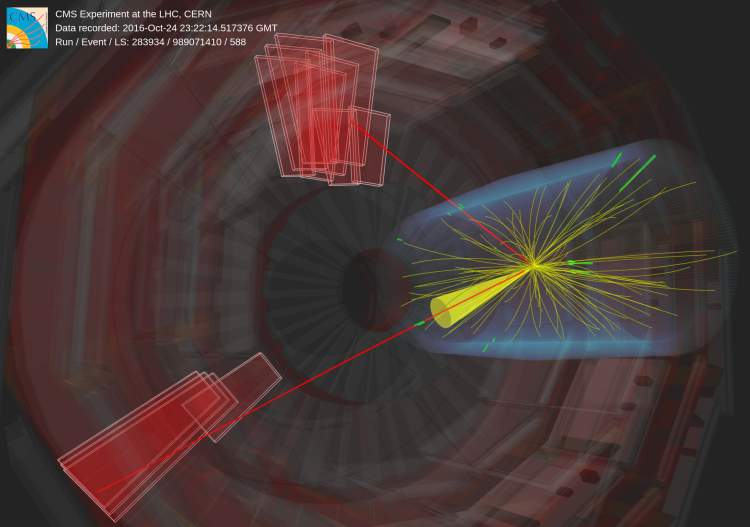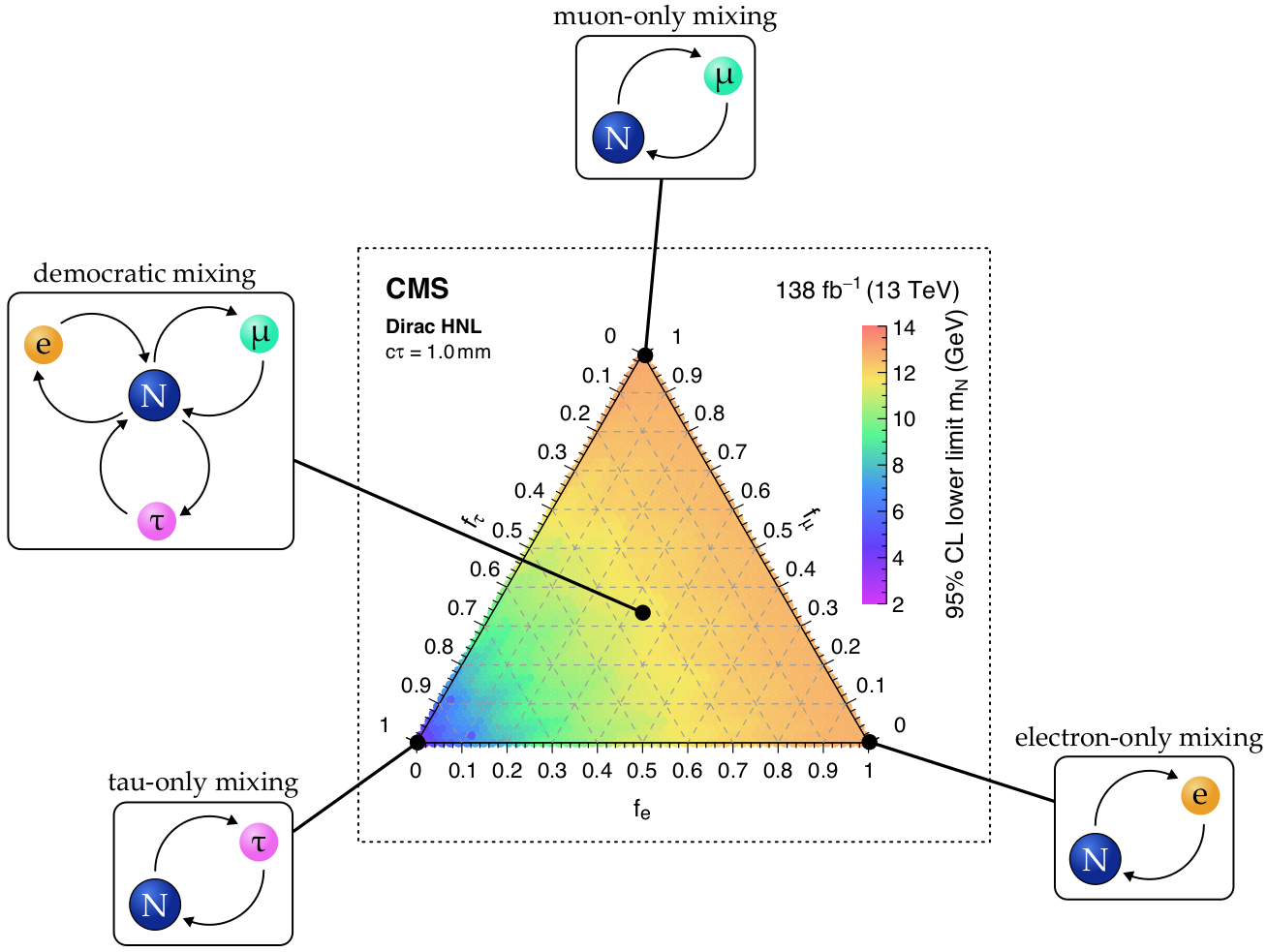
Did you know that every second more than 100 trillion tiny particles called neutrinos pass through your body without causing any harm? These mysterious particles are produced abundantly throughout the universe in events like nuclear reactions in the sun, radioactive decays in the Earth's crust, and in high-energy collisions in space. In particular, these subatomic particles play a crucial role in the explosive deaths of stars known as supernovae, where they act as the driving force behind the explosion. Despite their abundance in the universe, they are incredibly difficult to detect directly in experiments since they pass right through any matter and only interact extremely rarely. At the LHC, their existence can only be inferred indirectly by summing up the energy of all other particles produced from the proton collisions and looking for missing energy that has been carried away by the neutrino, which escaped the experiment undetected.
Neutrinos are a type of fundamental particle known as a lepton and they are electrically neutral. They stand out among fundamental particles because of their peculiar characteristics. Not only do they interact exceptionally rarely, but they also possess a minuscule mass, approximately 500,000 times lighter than that of an electron. One possible explanation for the smallness of their mass is given by the "seesaw" mechanism. According to this theory, there exist additional new fundamental particles that are electrically neutral. The mechanism postulates that the masses of these new particles, known as “heavy neutral leptons” (HNLs), are mathematically linked to those of the normal neutrinos, like two sides of a seesaw. The theory also predicts that the HNLs will “mix” with their known cousins, neutrinos. This means that a neutrino, produced in an LHC collision, can change into an HNL, and the HNL can then decay back into known particles that the LHC experiments can detect!
The seesaw explanation for the neutrino mass is particularly attractive and various searches for HNLs have been performed at the LHC and by other experiments in the past (see an example where CMS muon detectors are exploited in such a search). The CMS Collaboration has recently published a new search that makes the assumption that the mixing between the HNLs and neutrinos is very small. In this special case, the HNL can be “long lived” and travel macroscopic distances away from the collision point before decaying. Experiments can then take advantage of the unusual signatures from these "displaced” particle decays when trying to find evidence for the existence of HNLs.

Figure 1: Feynman diagram for the production of a Heavy Neutral Lepton, N, and its decay via a W boson, to the jet system, j*, and a lepton.
Physicists use modern AI techniques to efficiently search for the displaced particle decays in the collision data by optimally exploiting vast amounts of low-level information from the various detector systems. Within CMS, an artificial neural network has been developed to detect a HNL particle decaying into a normal lepton (such as the electron) and a spray of many particles known as a jet (see Fig. 1), even when the decay occurs very close (e.g. one millimetre) to or very far away (e.g. one metre) from the LHC collision point.
![]()

Figure 2: Lower limits on Heavy Neutral Lepton mass, mN, for a range of mixings to the standard model leptons: electrons, muons, and tau leptons.
Although no evidence for HNLs was found, the results have extended our knowledge of the HNL landscape by considering two different types of HNL (known as Dirac and Majorana), a wide range of possible mixing scenarios, and masses between 2 and 20 GeV. It is the first time that the decay to jets and arbitrary mixing with all three lepton generations (electrons, muons, and tau leptons) has been investigated at the LHC, resulting in some of the most stringent constraints on the current theories (see Fig. 2). In the future, the search will benefit from the larger data samples provided by the LHC to improve the sensitivity to HNLs.
Read more about these results:
-
CMS Paper (EXO-21-013): "Search for long-lived heavy neutral leptons with lepton flavour conserving or violating decays to a jet and a charged lepton "
-
@CMSExperiment on social media: LinkedIn - facebook - twitter - instagram
- Do you like these briefings and want to get an email notification when there is a new one? Subscribe here

